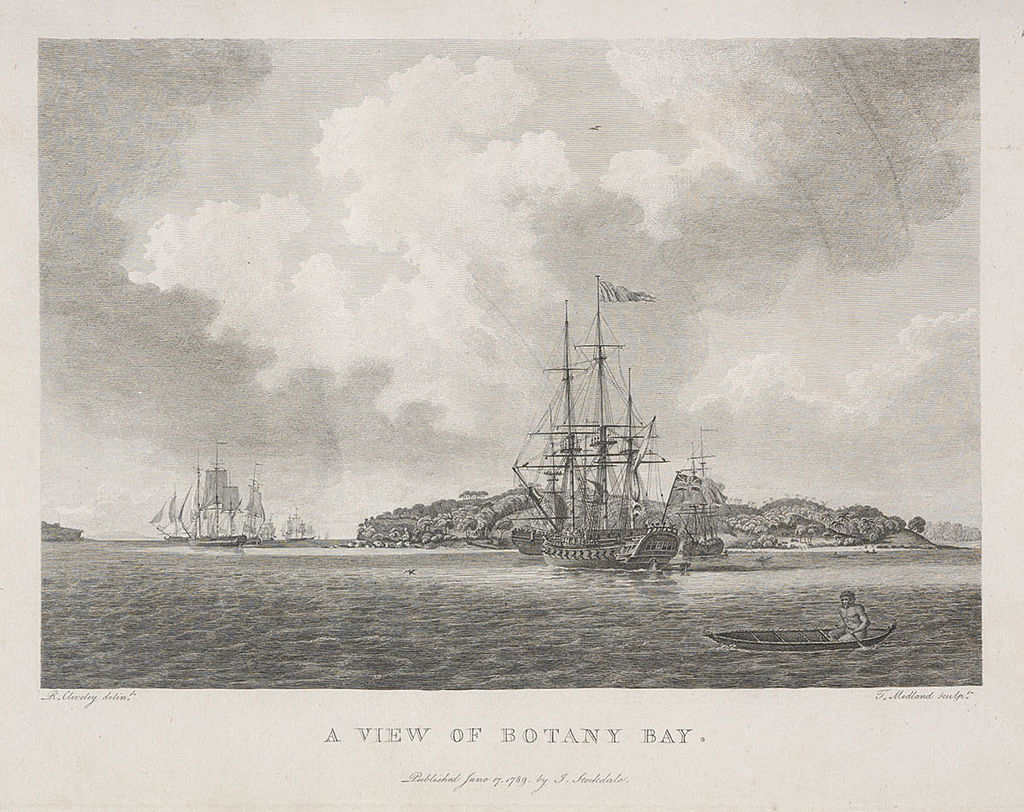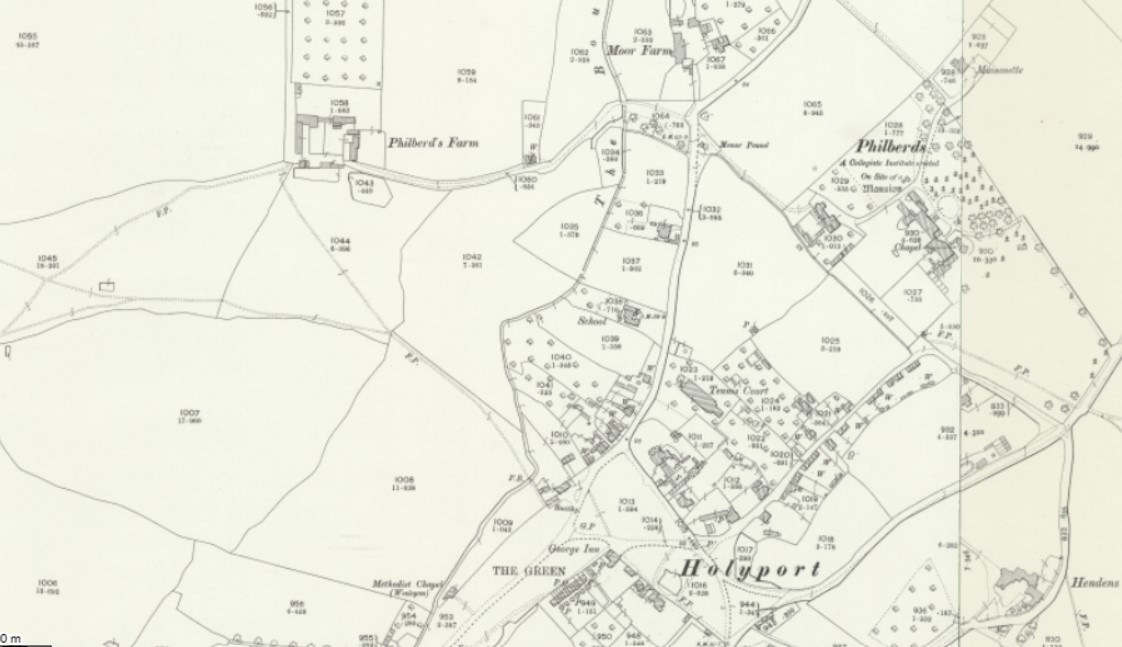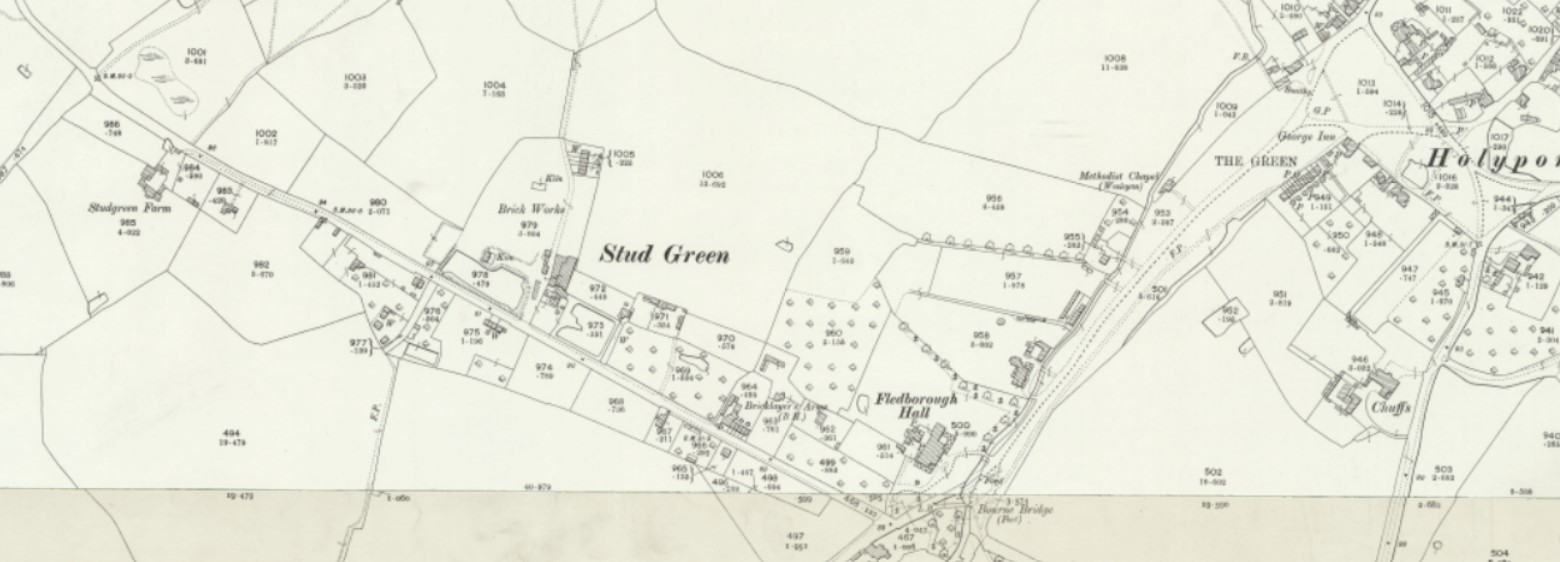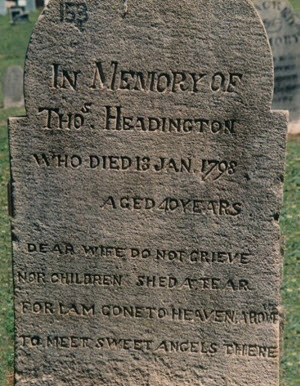
In March 1785 when Thomas Heddington (surname is also recorded as Headington, Eddington, Addington and Haddington) broke into Isaac Sewell’s house, I am sure he had no idea that he would be part of the first British settlement of Australia.
By July 1785 he was convicted at Abingdon Assizes of
…the simple feloniously stealing …Two Silver TableSpoons of the value of Twelve Shillings one wooden Dish of the value of one penny four Copper Farthings of the value of one penny Twenty Copper Halfpence of the value of Ten pence and Six pounds in monies numbered of the Goods & Chattles [sic] and Monies of Isaac Sewell
and sentenced ‘to be transported beyond the seas for the term of seven years’.
The Abingdon Berkshire Assizes record for 6 July 1785 (held at The National Archives – ASSI 5/105/3) states that Thomas was found ‘not guilty’ of ‘forcefully stealing’ Isaac Sewell’s property.
But it wasn’t until nearly 2 years later, in early 1787, that he boarded the barque Alexander for Australia to serve his seven years’ transportation, as part of what became known as ‘The First Fleet’. Generally, a sentence of seven years’ transportation was given to a particularly narrow group of criminals. Rapists and murderers at this time in Britain were hanged and petty criminals were gaoled. So, seven (or 14) years of transportation was used to punish habitual criminals (usually third offence) or serious theft.1 Thomas was one of 1400 people on the First Fleet – convicts, marines, sailors and civil officers. And one of over 160,000 convicts to be sent to Australia.
Thomas was probably in his mid to late twenties when he was convicted. If his age at death is used his year of birth is 1757 making him 28 years old in 1785. But in the hulk Ceres, record of 1787 he is 18 years old. No baptismal record has been found for Thomas. Thomas had a brother Richard. Richard may or may not have been present in Sewell’s house.2 But it appears that Richard was not charged as my research has failed to find any conviction/court records for him.3
Thomas is a labourer with lodgings in Stirt Green4 (now Sturt Green); an isolated road south west of the town of Bray. No mention is made of either his parents or a wife. At 28 years old one imagines he is making his own way in life.
Bray is both a town and a parish in Berkshire and is located between Reading and London. It is part of the Eastern District to the south of Maidenhead. The Thames forms Bray’s border to the north and west. Although the underlying rock is chalk, Bray, in the late 1700s was known for growing vegetables, and while not rich it wasn’t an area of abject poverty either.
Farming formed the basis of the economy in Bray in the 1780s; most land was privately owned but there was also a proportion that was common land. Enclosures5 began very early in Bray and may have contributed to economic difficulties for landless labourers – such as Thomas.6
Thomas is said, by Isaac Sewell, to have at:
…about five O’Clock in the morning after the Doors of his House had been opened, a Bureau, standing in his Hall at Philberts Farm in the said Parish of Bray, which had been double locked, was broke open in a forcible manner…7
and stolen
…six or seven pounds in cash, part of which being about eighteen shillings in Silver, … a wooden Dish, with asseat [sic] many half pence & farthings, amongst which was a remarkable crooked farthing, and also two large Silver Spoons, one marked S.P. and the other S:FS.’8
Thomas admits to stealing five pounds not six or seven. A search of his lodgings by Revd M Wells found ‘…many half pence and five farthings…’.9 It appears that Richard (Thomas’ brother) was living with him, as Thomas directed his brother to go home and fetch
… three Guineas10 in Gold, & three half Crown pieces in Silver…
The wooden dish was hidden under a hedge and the two silver spoons were buried in Foxleys field.11 Splitting up the spoils into four hiding places shows a level of planning consistent with someone who has done this more than once. In 1800 a labourer was paid £12 a year. So, three guineas was three months wages.

Figure 1 Holyport, Bray12
Figure 1 shows Philberd’s farm and Philberds Lodge (north of Holyport) in 1892 – one of which is the probable site of Philbert’s farm – the home of Isaac Sewell.

Figure 2 Holyport – Stud, Foxleighs13
Figure 2 shows Stud Green, where Thomas had lodgings in Sturt Green (the road to the south of Stud Green and Foxleighs (Foxleys) in the left foreground), where part of the loot was hidden.
An Historical Atlas of Berkshire (Ed. J Dils and M Yates) states for the years 1780 – 1789 most of the thefts for the Eastern District are stealing from houses and grand larceny. Thomas Heddington was convicted of stealing from a dwelling house. As an aside the Justice of the Peace in Thomas’ case was Pennyston Powney (signed Pen. Powney) who appears to reside in Bray, although Thomas was tried in Abingdon in the west of Berkshire.
There is an odd thing with the witness John Phillips who is also described as both a Petty Constable and a Victualler. He is a witness in that Thomas confessed to him to stealing Sewell’s goods. But it is also acknowledged that Phillips owed the Sovereign Lord the King twenty pounds; and that this amount be void if he gives evidence. Maybe, as a victualler (hotelier?) he was in a position to be Thomas’ fence and was induced to do a deal in return, not just for the 20 pounds, but also his freedom.14
Between Thomas’ conviction in July 1785, and boarding the Alexander in January 1787, it is difficult to ascertain exactly where he was incarcerated. The original Reading Gaol was built in 1786 and demolished in 1842 to make way for the new building. In addition to the county gaol in Reading, there were two houses of correction or bridewells present in the 1760s. One of these was in Abingdon and the other in Reading. Thomas may have been held in the Abingdon bridewell.15 He was among the first convicts who embarked at Woolwich (on the Thames) from the Ceres,16 a prison hulk,17 to the Alexander on 6 January 1787. The Alexander also had late arrivals put on board at Portsmouth. The 11 ships of the First Fleet waited at Motherbank (an anchorage in the Solent) for two months for the weather to clear before sailing to Australia on 16 March 1788.18
According to Surgeon Bowes the convicts of the First Fleet were very healthy – except for the Alexander
…few marines going out of England upon service were ever so amply provided for as these convicts are….19
Nevertheless, the Alexander, while at sea for nine months, had a miserable time of it. Sixteen men died before sailing, and a further five had died before its arrival in Tenerife, with 21 prisoners in sick bay. The ships were infested with rats, cockroaches and bugs.20 While in Tenerife there was unsuccessful escape by a prisoner – John Powers; he tried again, and hatched a plot to cause mutiny and escape at the Cape of Good Hope. It was foiled and he was put in irons on the flag ship. In addition, between Tenerife and Rio De Janeiro the Alexander lost a man overboard.
Thomas arrived on the Alexander at Port Jackson on 26 January 1788. The next we hear of him he has embarked on the HMAT (His Majesty’s Australian Transport) Supply to Norfolk Island March 1790.21
 By July 1791 Thomas had a grant of land on Norfolk Island22 and in November 1791 it is believed he married Elizabeth Thompson (Tamsin) a convict from Lady Juliana. They had two children on Norfolk Island, Margaret and John – and 11 grandchildren born in Tasmania. In the Victualling Book for 17 Mar 1792 he (Thos Eddington) is employed as a stone cutter and on ‘All species’ stores for 365 days in 1792. By 1793 42 days ‘All species’ and 7 days ‘meat only. And in 1794 84 days ‘All species’.23
By July 1791 Thomas had a grant of land on Norfolk Island22 and in November 1791 it is believed he married Elizabeth Thompson (Tamsin) a convict from Lady Juliana. They had two children on Norfolk Island, Margaret and John – and 11 grandchildren born in Tasmania. In the Victualling Book for 17 Mar 1792 he (Thos Eddington) is employed as a stone cutter and on ‘All species’ stores for 365 days in 1792. By 1793 42 days ‘All species’ and 7 days ‘meat only. And in 1794 84 days ‘All species’.23
On 13 July 1792 Thomas Addington, ex-convict, was granted 12 acres of land being Lot 59.24
Thomas died 13 January 1798 Norfolk Island, aged 40 years. His headstone today stands in the Norfolk Island Cemetery Kingston.
Figure 3 Thomas Headington headstone.
Source: LS Eddington 1988. Original held by CJ Eddington25
Endnotes
- Maxwell-Stewart, H. Conviction data. The Digital Panopticon: Tracing London Convicts in Britain and Australia, 1780-1925 https://www.digitalpanopticon.org/VDL_Founders_and_Survivors_Convicts_1802-1853
- National Archives Kew; Abingdon Berkshire Assizes 6 July 1785 – Assi 5/105/5 Isaac Sewell’s statement ‘…he then sent or directed his Brother Richard Heddington to go home, and fetched three Guineas in Gold, & three half Crown pieces in Silver, which he had given to his said Brother to keep for him…’ My photo 7
- As best as I can tell Richard remained in Berkshire working as a bricklayer and plasterer. He married Olivia Howlett and had four children. Aka Headington.
- National Archives Kew; Abingdon Berkshire Assizes 6 July 1785 – Assi 5/105/5. My Photo 7
- Enclosure was a system of land management. Common land was available to use by all villagers but by the late 1700s was seen as inefficient. Land owners could agree to enclose the land – limiting its use to the title holder – or later Parliament passed laws to mandate enclosures.
- Dils, j & Yates, M (eds) An historical atlas of Berkshire-2nd ed. Berkshire Record Society: England 2012
- National Archives Kew; Abingdon Berkshire Assizes 6 July 1785 – Assi 5/105/5. Isaac Sewell’s statement. My Photo 7
- National Archives Kew; Abingdon Berkshire Assizes 6 July 1785 – Assi 5/105/5. Isaac Sewell’s statement. My Photo 7
- National Archives Kew; Abingdon Berkshire Assizes 6 July 1785 – Assi 5/105/5. Isaac Sewell’s statement. My Photo 7
- A gold Guinea was originally worth £1 (20 shillings). But due to the fluctuations in the gold price it could be worth more. It was minted in Britain between 1663-1814 with a quarter ounce of gold. From 1717 to 1816, its value was officially fixed at twenty-one shillings.
- National Archives Kew; Abingdon Berkshire Assizes 6 July 1785 – Assi 5/105/5. My photo 7
- National Library of Scotland. Map of Holyport: OS inch 1892-1914. [accessed 27 Mar 2022] https://maps.nls.uk/geo/explore/#zoom=15&lat=51.48937&lon=-0.72697&layers=168&b=1
- National Library of Scotland. Map of Holyport: OS inch 1892-1914. [accessed 27 Mar 2022] https://maps.nls.uk/geo/explore/#zoom=15&lat=51.48937&lon=-0.72697&layers=168&b=1
- National Archives Kew; Abingdon Berkshire Assizes 6 July 1785 – Assi 5/105/4. John Phillip’s statement. My Photo 7
- Personal communication from James Mould Berkshire Archives Office (BRO) Archives Assistant. Email 23 March 2022
- Treasury Board Papers – Nos 2–215, 1787 (File 641. AJCP Reel No: 3550) Lord Sydney: Mr Duncan Campbell’s account for maintaining convicts under sentence of transportation to the 12th instant £1660.1, 19 January 1787 (Item 175) [accessed 20 Mar 2022 via Trove]
- Hulks were decommissioned (and often unseaworthy) ships that were moored in rivers and estuaries and refitted to become floating prisons. The outbreak of war in America in 1775 meant that it was no longer possible to transport British convicts there. Source: The Digital Panopticon: Tracing London Convicts in Britain and Australia, 1780-1925 https://www.digitalpanopticon.org/Convict_Hulks [accessed 20 Mar 2022]
- Bateson, C., The convict ships 1787-1868 – Australian Edition. Reed: Sydney 1974
- Bateson p.116
- Bateson p.102
- Cathy Dunn, “Thomas Eddington – Heddington – Headington, Convict Alexander 1788,” in HMS Sirius, http://hmssirius.com.au/thomas-eddington-heddington-headington-convict-alexander-1788/, [accessed 20 March 2022]
- An account of grounds on Norfolk Island, July 1791, TNA, PRO CO/201/9.
- Norfolk Island Victualling Book State Library of NSW. Norfolk Island victualling book, 1792-1796 | SAFE/A 1958 (Safe 1/266) [accessed 20 Mar 2022]
- Mutch, T. D. & Genealogical Society of the Church of Jesus Christ of Latter-Day Saints. [19–], Mutch card indexes, 1787-1957 [microform]
- Photograph taken by LS Eddington 1988 held by CJ Eddington
